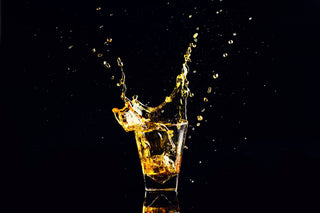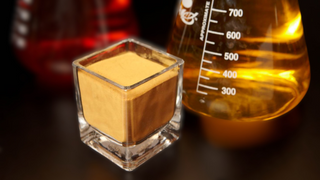There are nine dyes permitted for use in foods and beverages—Blue 1, Blue 2, Green 3, Red 3, Red 40, Yellow 5, Yellow 6, Citrus Red 2, and Orange B.
Each year, 15 million pounds of food dyes are incorporated into the American food supply. Their sole purpose is to enhance the visual appeal of foods to consumers. Yet, devoid of any nutritional value, these additives are, in fact, toxic chemicals linked to a myriad of health issues, including allergic reactions, asthma, hives, hypersensitivity, hyperactivity, behavior and attention disorders, irritability, depression, difficulty sleeping, mitochondrial impairment, tumor growth, and cancer.
The initial synthetic food color, red, was derived from coal tar in 1856. One might assume we've progressed beyond such origins, yet modern synthetic food dyes are predominantly derived from petroleum. Thus, consuming artificially colored foods or drinks entails ingesting a crude oil derivative, sourced from the same reservoir as gasoline, diesel fuel, asphalt, and tar.
Despite the development of numerous dyes over time, the majority were deemed so toxic that they are now obsolete. Presently, nine dyes are authorized for use in foods and beverages—Blue 1, Blue 2, Green 3, Red 3, Red 40, Yellow 5, Yellow 6, Citrus Red 2, and Orange B—and each raises significant concerns. Notably, three of these dyes—Red 40, Yellow 5, and Yellow 6—constitute 90% of the food dyes employed in the US.
Over the past 50 years, the consumption of artificial food dyes has surged by 500%, with children being the primary consumers. In 1950, the FDA approved 12mg of food dyes per capita per day, a figure that escalated to 62mg per capita per day by 2010. Notably, as little as 30mg of food dye has been linked to behavioral issues in children. Researchers at Purdue University estimate children consume 100mg of artificial dyes per day, and potentially up to double that. These high levels of consumption have never been tested for safety in any studies.
In 2009, increasing scientific evidence revealing the hazards of synthetic food dyes prompted the British government to urge food manufacturers to adopt safer coloring alternatives. Consequently, toxic artificial dyes have been supplanted in the UK by natural food-based colors sourced from beets, carrots, spinach, pumpkin, berries, red cabbage, turmeric powder, saffron powder, and paprika.
In 2010, the UK began requiring a warning label on any foods containing artificial food dyes, which reads "may have an adverse effect on activity and attention in children.
In 2011, due to these government recommendations and consumer pressure, Walmart, Coca Cola and Mars companies removed artificial colors, sodium benzoate and aspartame from their UK products.
It's true - food giants like McDonalds, Coca Cola, and Wal-Mart make products cleaner for the UK, and they continue to poison us in the U.S. Look it up!
Here are just some of the potential risks food dyes can have to your health:
-
Allergic Reactions: Suffer from allergies? Various studies have revealed that Yellow 5 can induce hives and symptoms of asthma. Among the three most commonly consumed dyes—Red 40, Yellow 5, and Yellow 6—these are the ones most prone to triggering systemic allergic responses. Moreover, these dyes may contain cancer-causing contaminants like Benzidine, 4-aminobiphenyl, and 4-aminoazobenzene.
-
Hyperactivity and Behavioral Issues: Some studies suggest that certain food dyes, particularly Yellow 5 and Yellow 6, may contribute to hyperactivity and behavioral problems, especially in children.
-
Cancer Risk: Certain food dyes contain carcinogenic contaminants like Benzidine, 4-aminobiphenyl, and 4-aminoazobenzene, which can increase the risk of cancer.
-
Digestive Problems: Consumption of food dyes may cause digestive issues such as abdominal pain, bloating, and diarrhea, especially in individuals with gastrointestinal conditions like irritable bowel syndrome (IBS) or inflammatory bowel disease (IBD).
-
Neurological Effects: Some food dyes have been associated with adverse neurological effects, including neurodegenerative diseases like Alzheimer's and Parkinson's disease, as well as cognitive impairment.
To mitigate these risks, DO NOT EAT THEM! They offer zero nutrition benefit, and only take away healthy years on your life.
GO LOOK IT UP
In a 2007 study published in The Lancet, researchers discovered that food dyes and the preservative sodium benzoate significantly increased hyperactivity and distractibility in children.
A 1994 study from the Department of Pediatrics at the University of Melbourne's Royal Children's Hospital in Victoria, Australia, linked Yellow 5 to behavioral changes, including irritability, restlessness, depression, and sleep disturbances.
Similarly, a 1994 study conducted at the North Shore Hospital-Cornell Medical Center in New York revealed that 73% of children with ADHD responded positively to an elimination diet that excluded artificial colors.
A 2004 meta-analysis of trials conducted by David W. Schab of Columbia University, published in the Journal of Developmental & Behavioral Pediatrics, indicated that artificial food colors may lead to neurobehavioral toxicity.
In a separate study in 1996 at the School of Food Engineering, State University of Campinas in São Paulo, Brazil, researchers tested 11 food dyes and found that all of them inhibited mitochondrial respiration.



![Food Dyes are never ok [Not even a little]](http://mettlefactor.com/cdn/shop/articles/METTLEPLate-Banners-13.png?v=1715108344&width=320)

![How Does FULVIC Acid Work? [UNDERGROUND]](http://mettlefactor.com/cdn/shop/articles/MF_Website_Banners-6.png?v=1729117714&width=320)